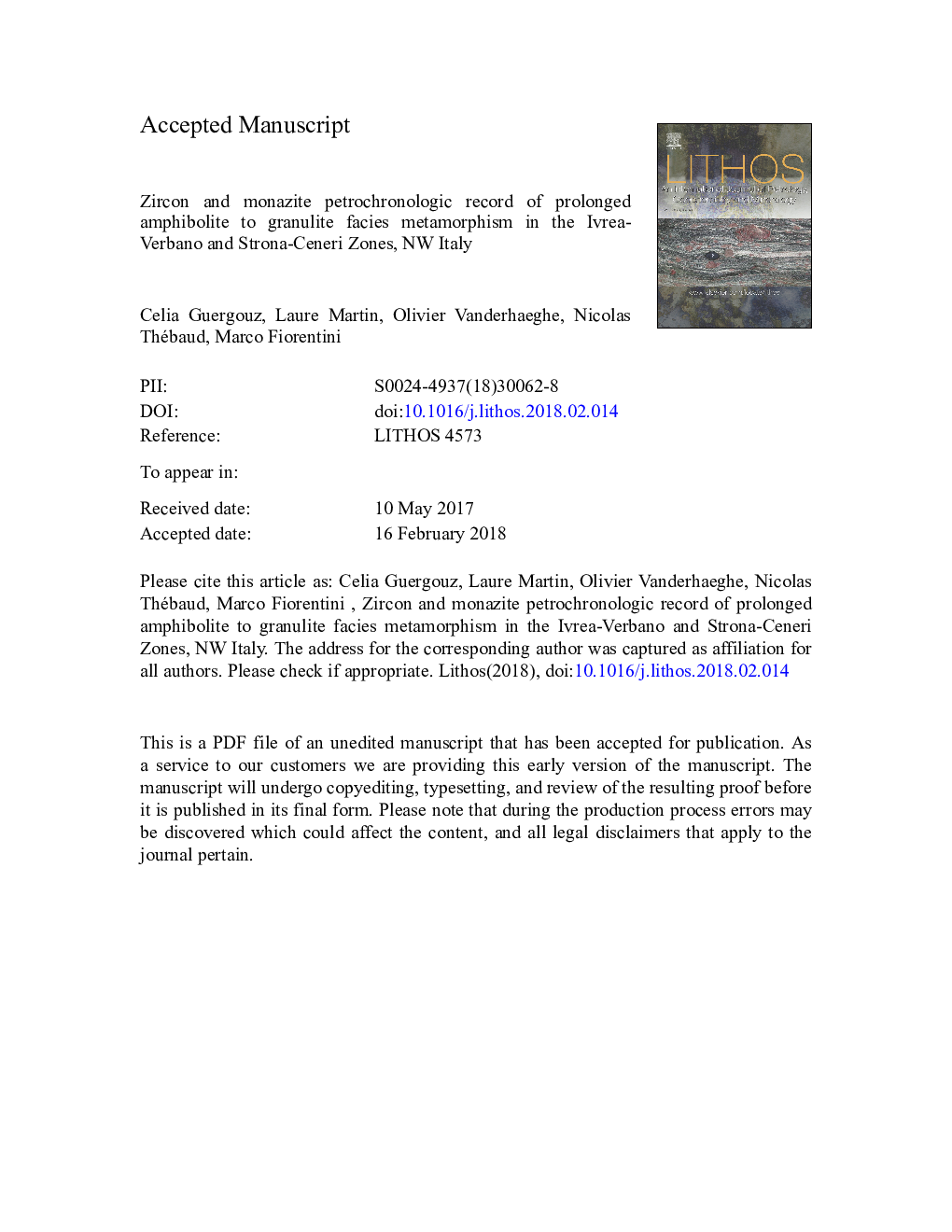| Article ID | Journal | Published Year | Pages | File Type |
|---|---|---|---|---|
| 8911632 | Lithos | 2018 | 73 Pages |
Abstract
In the Ivrea-Verbano Zone the interquartile range (IQR) of U-Pb ages on zircon and monazite are interpreted to represent the length of zircon and monazite crystallisation in the presence of melt. Accordingly, they provide an indication on the minimum duration for high-temperature metamorphism and partial melting of the lower crust: 20â¯Ma and 30â¯Ma in amphibolite and granulite facies, respectively. In amphibolite facies, zircon crystallisation between 310 and 294â¯Ma (IQR) is interpreted to reflect metamorphic peak condition and earlier retrograde history; conversely, monazite crystallisation between 297 and 271â¯Ma (IQR) reflects cooling under ~750â¯Â°C to a temperature close to the solidus. In granulite facies, zircon crystallisation between 295 and 265â¯Ma (IQR) is interpreted to reflect high-temperature conditions, which were attained after peak of metamorphism during isothermal decompression and subsequent cooling under ~850-950â¯Â°C. The observed decrease of U-Pb ages in metamorphic zircon and monazite from amphibolite to granulite facies (i.e. from the middle to the lower crust) is interpreted to record slow cooling and crystallisation of the Variscan orogenic root at the transition from orogenic collapse to opening of the Tethys Ocean.
Related Topics
Physical Sciences and Engineering
Earth and Planetary Sciences
Geochemistry and Petrology
Authors
Celia Guergouz, Laure Martin, Olivier Vanderhaeghe, Nicolas Thébaud, Marco Fiorentini,
